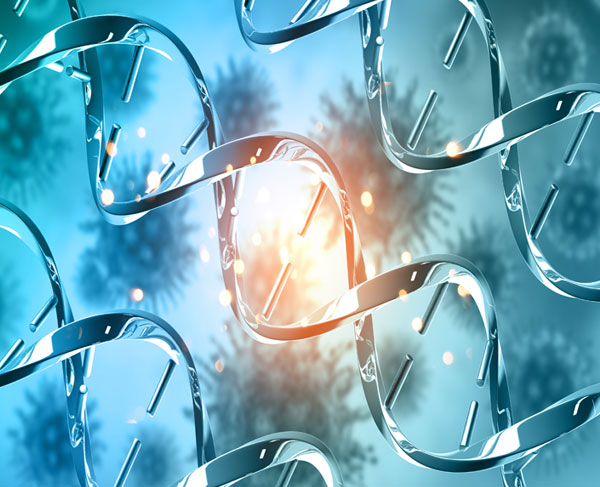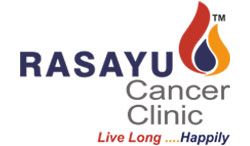Cancer Types
- Bladder Cancer
- Bone Cancer
- Breast Cancer
- Cervical Cancer
- Colorectal Cancer
- Endometrial Cancer
- Head & Neck Cancer
- Kidney Cancer
- Laryngeal Cancer
- Leukaemia
- Liver Cancer
- Lung Cancer
- Multiple Myeloma
- Nasopharyngeal Cancer
- Non-Hodgkin's Lymphoma
- Oesophagus Cancer
- Oral Cancer
- Ovarian Cancer
- Pancreatic Cancer
- Prostate Cancer
- Skin Cancer
- Stomach Cancer
- Testicular Cancer
- Thyroid Cancer
Opening Hours
- Monday - Saturday 10:00 am - 7.00 pm

Liver Cancer
- The liver is the largest gland in the human body and performs more than 500 varied functions.
- Liver cancer is seen more often in males than females and its rate of incidence and mortality is 2-3 times higher in men.
- Average age of diagnosis of Liver cancer is around 63 years.
- As per Globocan 2018 report, 4.7% new liver cancer cases were diagnosed in 2018 and 8.2% patients died of liver cancer in the same year.
- Primary liver cancer includes Hepatocellular carcinoma (HCC) comprised 75- 85 % of the cases followed by intrahepatic cholangiocarcinoma (10- 15%).
- The 5-year survival rate for common type of liver cancer is 33% and it drops down to 11% if it has spread to surrounding tissues/ organs and/or the regional lymph nodes.
- Types of Liver Cancer :
– Hepatic cell Carcinoma (HCC) 75 – 85 % of the cases.
– Intra hepatic Colangiocarcinoma (IHC) 10 – 15% of the cases.
Causes
- Hepatitis B infection – 25- 40% of the patients with Hepatitis B carries risk of developing liver cancer. This risk of developing liver cancer increases with chronicity of the disease.
- Hepatitis C infection- 20% of the patients with hepatis C develops cancer in later life.
- Liver Cirrhosis – Liver cirrhosis may be caused by chronic liver infection (Hep B and C), genetic hemochromatosis, stage IV primary biliary cholangitis, alpha-1-antitrypsin deficiency.
- Excessive consumption of alcohol.
- Type 2 Diabetes – Type 2 Diabetes mellitus is associated with an increased incidence of liver cancer and mortality in liver cancer.
- Non-alcoholic fatty liver diseases (NAFLD).
- Exposure to Alpha toxins.
- Obesity.
- Removal of gall bladder.
- Food contaminated with Aflatoxin.
- Heavy alcohol intake.
- Obesity.
- Smoking.
- Removal of gall bladder – Risk of liver cancer increases by two folds in patients who have removed gall bladder.
- Family history.
Carcinogenic agents with sufficient evidence in humans
- Aflatoxins.
- Alcoholic beverages.
- Clonorchis sinensis.
- 1,2-Dichloropropane.
- Estrogen-progestogen contraceptives.
- Hepatitis B virus.
- Hepatitis C virus.
- Opisthorchis viverrini.
- Plutonium.
- Thorium-232 and its decay products.
- Tobacco smoking (in smokers and in smokers’ children).
- Vinyl chloride.
Agents with limited evidence in humans
- Androgenic (anabolic) steroids
- Arsenic and inorganic arsenic compounds
- Betel quid without tobacco
- DDT Dichloromethane (Methylene chloride)
- Human immunodeficiency virus type 1
- Schistosoma japonicum
- Trichloroethylene
- X-radiation, gamma-radiation
- Liver cirrhosis.
- Hepatitis B.
- Hepatitis C.
- Hemochromatosis.
Signs and Symptoms
Signs and symptoms of Liver cancer usually do not appear at early stage. However people having chronic liver condition may experience these symptoms at earlier stages. Some of the most common symptoms of Liver cancer are :
- Unintentional weight loss.
- Anorexia (Loss of appetite).
- Heavy feeling in the abdomen even after small meal.
- Nausea or vomiting.
- An enlarged liver.
- An enlarged spleen.
- Pain in the abdomen or near the right shoulder blade.
- Swelling or fluid build-up in the abdomen.
- Excessive sweating, especially at night.
- Itching.
- Jaundice (Yellowing of the skin and eyes).
- Fever.
- Enlarged veins on belly.
- Weakness.
- Abdominal Distention.
- Pale coloured stool ( in case of obstructive jaundice ) etc.
Investigation / Screening
- Physical examination and history
– Discoloration of the skin (usually yellow)
– Palpation of liver
– Palpation of spleen
– Presence of fluid in the abdomen – In case of any suspicion, he may be advised further tests to confirm Liver
cancer. - Biopsy
– A biopsy of the liver is a medical procedure in which a small amount of liver tissue is surgically removed so it can
be tested in a laboratory.
– Liver biopsies are usually done to detect the presence of abnormal cells in the liver.
– Fine needle aspiration (FNAC)/core biopsy is performed for the diagnosis of this type of cancer.
– It is done by fibre optic endoscopy or fine needle aspiration (FNAC)/core needle biopsy of the organ mass.– This is confirmative test of cancer.
- PET Scan / MRI / CT Scan
– Imaging tests can help to find suspicious areas that might be cancerous.
– It also can be used in diagnosis as well as to ascertain the extent of spread of cancer in other organs. - Biomarker Investigation
– A biomarker is a molecule released by a tumor or a specific response of the body to the presence of cancer.
– Genetic, epigenetic, proteomic, glycomic, and imaging biomarkers can be used for cancer diagnosis, prognosis,
and epidemiology. - Blood Investigation Reports
– Complete Blood Count (CBC)
– Liver Function Test (LFT)
– Hepatitis Panel
– Renal Function Test (RFT)
– Prothrombin Time (PT)
– International Normalized Ratio (INR)
– Tumor Markers- Like Alpha-fetoprotein (AFP), Cancer antigen 19.9 (CA 19.9), Carcinoembryonicantigen (CEA).These tests help to make a diagnosis and assess the physiological condition of the liver.
Treatment
- To plan personalised treatment for each individual patient as every individual is different even if they have the same type of cancer.
- To improve health related quality of life (QOL) in all types and stages of cancer patients.
- To plan for partial or total regression of tumour depending on the nature of tumors.
- To increase overall survival (OS) of patients.
- To increase disease free survival (DFS) where complete resection of tumour is achieved.
- To provide a treatment option to patients who are refractory to conventional treatments like chemotherapy / radiotherapy / immunotherapy etc.
- To reduce the rate of growth of the tumor in recurrent and advanced staged cases.
- To increase progression free survival in advance cases.
- To reduce impact of symptoms related to progression of disease.
- To improve confidence of patients.
- To provide palliative support in end-of- life cancer cases.
- To add happiness and extension of life to cancer patients.
- To compliment other therapies like chemotherapy, radiotherapy in a synergistic way.
- To reduce severity or adverse effects of other conventional treatment. This reduces incidence and frequency of hospitalization.
- It is pertinent to note that Rasayu Cancer Clinic does not claim or blame anything while communicating any aspect to cancer patients.
- Rasayu Cancer Clinic focuses on Ayurveda fundamental based therapies.
- Rasayu Cancer Clinic believes in continuous improvement in service and science.
- Rasayu Cancer Clinic always advocates patient centric approach which leads to long and happy life of cancer patients.
- Every patient has a right to choose the therapy.
- Rasayu Cancer Clinic never imposes Rasayana therapy on patients but helps them to take the right decision, hence making patients/ relatives well aware about the disease and possible outcomes along with its risk benefit and cost benefit ratios.
- Rasayu Cancer Clinic is well connected with global updates in cancer care and therapies, through advisors and collaborations with national and international institutes.
- Treatment options may vary as per age of a patient, stage and type of cancer and the response of the tumor to previous treatments.
- Treatment options and recommendations depends on several factors:
– Extent of the liver damage.
– Spread of cancer to other organs or neighbouring tissue.
– The patient’s preferences and overall health. - From treatment point of view Liver Cancer are classified as follows :
A. Potentially Resectable or Transplantable.
- Liver cancer patients of early stage with small size of tumor are considered in this category.
- Part of liver with tumor is surgically resected.
B. Unresectable
- This category includes patients with large liver tumor but yet not spread to lymph node or to any other organ, tumor near to large blood vessels or multiple liver tumors.
- In such condition with the help of other treatment options like ablation, embolization, radiation or chemotherapy, size of tumor is reduced so that surgery is possible.
C. Inoperable with only local disease
- The health condition of patient does not permit resection of even small tumors, all such patients are included in this category.
- For such condition other treatment options like ablation, embolization, chemotherapy or radiotherapy is considered.
D. Advanced
- If cancer is spread beyond lymph node into other organ it is not treated with surgery. In such condition chemotherapy is suggested.
- Focus is shifted to palliative treatment.
Surgery
- It is the removal of the tumor and some surrounding healthy tissue during a procedure.
- It is one of the most successful treatments, where liver function is satisfactory and tumors can be safely removed from a limited portion of the liver.
Hepatectomy
- When a portion of the liver is removed, the surgery is called a hepatectomy.
- A hepatectomy can be done only if the cancer is in one part of the liver and the liver function is fine.
- The side effects of a hepatectomy may include pain, weakness, fatigue, and temporary liver failure.
Liver Transplantation
- Liver transplantation is a performed based on the size and number of tumors and availability a suitable donor.
Chemotherapy
- Chemotherapy treatment uses medicine to weaken and destroy cancer cells at the original cancer site and any cancer cells that may have spread to other parts of the body.
- While destroying cancer cells, it destroys fast dividing normal cells, which further creates multiple side effects.
- Chemotherapy side effect in Liver Cancer – Click Here
- Side-effects of Conventional Liver Cancer therapy – Click Here
- For detailed review of side effects of chemotherapy – Click Here
- Side effects of Chemotherapy – Click Here
- Adverse drug reactions (ADRs) of Chemotherapy – Click Here
Radiofrequency ablation or Thermal Ablation
- RFA and microwave therapy both use heat to destroy cancer cells.
- They may be given through the skin, through laparoscopy, or during a surgical operation under sedation.
Radiation Therapy
- Radiation therapy is the use of high-energy x-rays or other particles to destroy cancer cells.
- Most commonly used type of radiation is as under :
– Stereotactic body radiation therapy (SBRT).
– SBRT is delivering high doses of radiation therapy to a tumor while limiting the amount of radiation to nearby
healthy tissue.
– This is important because healthy liver tissue can be damaged by radiation.
– SBRT effectively treats tumors that are about 5 cm or smaller.
– However, studies are still insufficient to prove its long term effectiveness. - Side Effects of Radiotherapy – Click Here
Proton Therapy
- Proton therapy uses protons, positively charged particles, found in the nucleus of an atom.
- Proton beams enter the body with a low dose of radiation and deposits its maximum radiation directly into the tumor.
Rasayu Cancer Clinic Rasayan Treatment Protocol – To know more please click here
Rasayu Therapy is recommended for those :
- Rasayu Therapy is recommended for those :Who voluntarily opted for this treatment as their first choice.
- Who are disenchanted with the past treatments.
- Who do no see any other options of treatments.
- Who are looking for personalized treatment plan.
- Who desire a convenient home-based oral therapy which is easy for consumption.
- Who are susceptible to acquire hospital borne infections/ complications, hence not willing to be hospitalised.
- Who are looking for favourable risk benefit ratio.
- Who desire to improve Quality of Life benchmarks based on global standards and monitored regularly.
- Who wants to be involved in decision making for choice of treatment?
- Who are willing to be involved in monitoring the efficacy of Rasayana Therapy?
- Who believe in the transparency of the process by conducting regular investigations by biochemical parameters/ hi tech imaging techniques like PET scan etc.
- Who are looking for professionals being sensitive to the patient, the care givers and the family.
- Who desire to take even with other treatments including Chemotherapy / Radiotherapy.
Disclaimer : This Website contains certain links such as You Tube links, research paper links / website links / audio visuals / internet information already available in public domain. The information contained in the audio visuals is meant for use by qualified Medical Professionals. The content of the links etc has been made available for informational and educational purposes only. Rasayu Cancer Clinic and its associates do not make any warranties with respect to the accuracy, applicability, fitness, or the completeness of the content of such links etc. The information contained in such links represents the views and opinions of the original creator of such links and are not views endorsed by the Rasayu fraternity.


